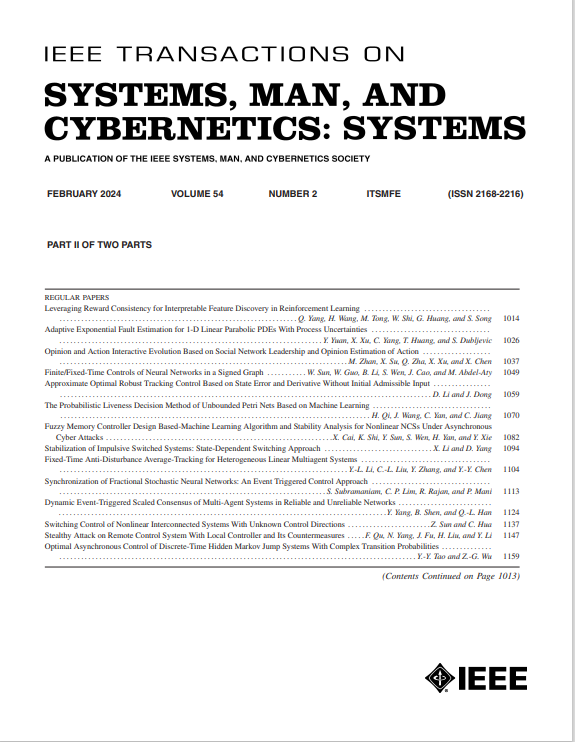Global-Regularized Neighborhood Regression for Efficient Zero-Shot Texture Anomaly Detection
IF 8.7
1区 计算机科学
Q1 AUTOMATION & CONTROL SYSTEMS
IEEE Transactions on Systems Man Cybernetics-Systems
Pub Date : 2025-08-20
DOI:10.1109/TSMC.2025.3595539
引用次数: 0
Abstract
Texture surface anomaly detection finds widespread applications in industrial settings. However, existing methods often necessitate gathering numerous samples for model training. Moreover, they predominantly operate within a closed-set detection framework, limiting their ability to identify anomalies beyond the training dataset. To tackle these challenges, this article introduces a novel zero-shot texture anomaly detection method named global-regularized neighborhood regression (GRNR). Unlike conventional approaches, GRNR can detect anomalies on arbitrary textured surfaces without any training data or cost. Drawing from human visual cognition, GRNR derives two intrinsic prior supports directly from the test texture image: local neighborhood priors characterized by coherent similarities and global normality priors featuring typical normal patterns. The fundamental principle of GRNR involves utilizing the two extracted intrinsic support priors for self-reconstructive regression of the query sample. This process employs the transformation facilitated by local neighbor support while being regularized by global normality support, aiming to not only achieve visually consistent reconstruction results but also preserve normality properties. We validate the effectiveness of GRNR across various industrial scenarios using eight benchmark datasets, demonstrating its superior detection performance without the need for training data. Remarkably, our method is applicable for open-set texture defect detection and can even surpass existing vanilla approaches that require extensive training.基于全局正则化邻域回归的纹理零弹异常检测
纹理表面异常检测在工业环境中有广泛的应用。然而,现有的方法往往需要收集大量的样本进行模型训练。此外,它们主要在封闭集检测框架内运行,限制了它们识别训练数据集以外的异常的能力。为了解决这些问题,本文提出了一种新的零拍摄纹理异常检测方法——全局正则化邻域回归(GRNR)。与传统方法不同,GRNR可以在不需要任何训练数据或成本的情况下检测任意纹理表面上的异常。GRNR借鉴人类视觉认知,直接从测试纹理图像中获得两种内在先验支持:以连贯相似性为特征的局部邻域先验和以典型正态模式为特征的全局正态先验。GRNR的基本原理是利用提取的两个内在支持先验对查询样本进行自重构回归。该过程采用局部邻居支持促进的变换,同时采用全局法线支持进行正则化,既能获得视觉上一致的重建结果,又能保持法线属性。我们使用8个基准数据集验证了GRNR在各种工业场景中的有效性,证明了它在不需要训练数据的情况下具有优越的检测性能。值得注意的是,我们的方法适用于开放集纹理缺陷检测,甚至可以超越现有的需要大量训练的香草方法。
本文章由计算机程序翻译,如有差异,请以英文原文为准。
求助全文
约1分钟内获得全文
求助全文
来源期刊

IEEE Transactions on Systems Man Cybernetics-Systems
AUTOMATION & CONTROL SYSTEMS-COMPUTER SCIENCE, CYBERNETICS
CiteScore
18.50
自引率
11.50%
发文量
812
审稿时长
6 months
期刊介绍:
The IEEE Transactions on Systems, Man, and Cybernetics: Systems encompasses the fields of systems engineering, covering issue formulation, analysis, and modeling throughout the systems engineering lifecycle phases. It addresses decision-making, issue interpretation, systems management, processes, and various methods such as optimization, modeling, and simulation in the development and deployment of large systems.
 求助内容:
求助内容: 应助结果提醒方式:
应助结果提醒方式:


